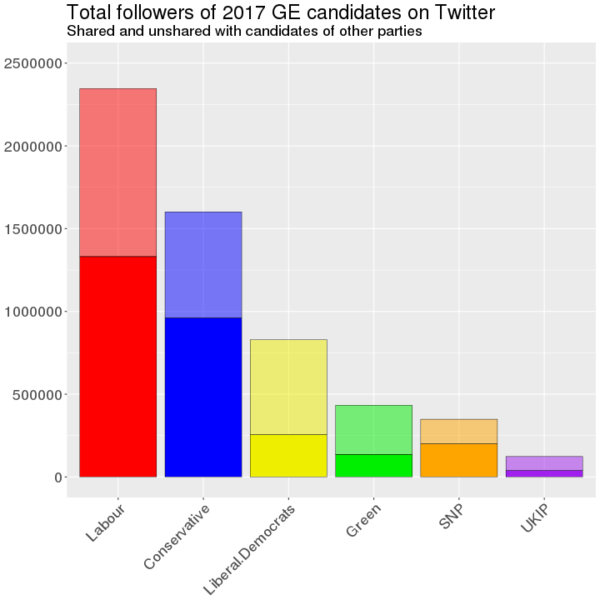Last month, I published an analysis of candidates’ public Twitter followers immediately before the General Election. As I showed, Conservative candidates tended to have more public followers than Labour candidates — but once we control for whether candidates had or had not previously been Members of Parliament, we find that Labour candidates tended to have more public followers than Conservative candidates. SNP candidates tended to have more public followers than Conservative or Labour candidates, although that finding was not statistically significant after controls because of the low numbers involved.
This does not, however, address the question of which party’s candidates had more public followers in total — nor the much more subtle question of how many of each party’s candidates’ public followers exclusively followed candidates of that party, and how many also followed candidates of other parties. To answer that question, we need to know who the candidates’ followers were. Fortunately, I do:

As one might expect given that Labour fielded the most candidates and had the candidates with the largest individual Twitter followings, Labour won the day — followed by the party with the next most candidates and the next biggest social media stars, i.e. the Conservative Party. An unexpected finding is that while the majority of Labour, Conservative, and SNP candidates’ followers followed the candidates of no other parties, the reverse applies to the Liberal Democrats, the Green Party, and UKIP. This means that while the Green Party had more followers than the SNP, it had fewer ‘faithful’ followers.
The question of who the ‘promiscuous’ followers were shared with will be left to a future post.